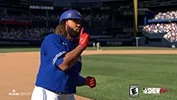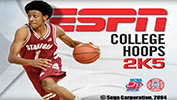| Albums |
| Screenshots |
| Videos |
| Communicate |
| Friends |
| Chalkboard |
Recruiting for the Flexbone
This is a discussion on Recruiting for the Flexbone within the EA Sports College Football and NCAA Football forums.
|
||||||
 | MLB The Show 24 Review: Another Solid Hit for the Series |
 | New Star GP Review: Old-School Arcade Fun |
 | Where Are Our College Basketball Video Game Rumors? |

|
|
|
Thread Tools |
|
|
#49 |
|
The Legendary Roots Crew
|
As far as carry distribution you say that the b back should get the bulk of the carries, but how do you go about that? It seems like when I try to run it, my a backs get the most carries. Do you essentially run the triple option every play?
Thanks. Sent from my HTC VLE_U using Tapatalk 2 |
|
|
|
|
#50 | ||||||||||||||||||||||||
|
Franchise Streamer
|
Re: Recruiting for the Flexbone
|
||||||||||||||||||||||||
|
|
|
|
#51 |
|
We had subs. It was crazy
|
Re: Recruiting for the Flexbone
Here's a write up I did for my dynasty. I don't have NCAA14 yet but I would guess most of the same principles apply. This echoes most of the what the other guys were saying. I like to have a heady QB, one true WR (I call X), one TE/WR hybrid (I call Y), a strong B-Back, and quick A-Backs (I call one A and one Z). As with any offense, some of the terminology or position names may be different.
COACH’S CLINIC Offensive Philosophy: The Flexbone wants to stretch the field both horizontally and vertically. The offense attacks the defense horizontally by having multiple ball carriers threaten the various zones of the defense (the famous “phases” of the option). The offense attacks the defense vertically by threatening the line of scrimmage with four vertical threats, the X, Y, A and Z. Our Y and Z are both hybrid positions that allow us to line up in any of our formations with the same personnel on the field. That way, the defense can never guess our formation or playcalling intentions based off of our huddle. Many people characterize this as a “running” or “triple option” offense, and while those are important parts of our offense, they are not the only parts. The Flexbone is a derivative of the Run-And-Shoot, and many of the passing concepts remain. We are not afraid to put the ball in the air. That being said, we won’t pass if we don’t have to. Q (Quarterback): You would think the first thing we look for in a quarterback would be speed, but it isn’t. The most important trait a Mechanicsburg quarterback can have is decision-making. Our offense runs at its best when our quarterback makes good decisions. The next question to be asked is can the quarterback move when he has to? He doesn’t need to be a speed merchant, but he needs to make the defense pay if he is ignored. Size wise, the quarterback does a good amount of inside running, so we want him to be big enough to be able to absorb a few hits. That being said, the quarterback that can make a quick decision and get vertical up field is exactly the type of guy we are looking for. X (Wide Receiver, Split End): The X is the closest thing we have to a true wide receiver in our offense. He is split out wide on the line of scrimmage in all of our formations, and he fulfills the role of a prototypical wide receiver. We want the X to be able to run routes and catch the football. Ideally, we look for large, possession type receivers that are also willing to block downfield. He also runs most of our downfield routes. For our deep passes, the element of surprise plays a large role. Y (Wide Receiver, Split End, Tight End): The Y is the first of our hybrid positions. The Y is responsible for both lining up wide as a split end and also being attached to the formation as a tight end. Because of this, we look for a very specific type of athlete to play the Y. He needs to be big, but he also needs to be able to run routes against the opponent’s secondary. It also allows us to get a big body out in space to act as a lead blocker on our outside running plays. A (A-Back, Slot Back, Wing Back, Running Back): Our A-Back is most like a Tailback in traditional offenses. On most of our option plays the A-Back will be the pitch man, so speed is the desired trait here. Size is not a necessity, as most of the A-Back’s running will be to the outside. The A-Back will also run routes, so being able to catch the football is a plus. He doesn’t have to be six feet tall or weigh two hundred pounds, but speed and acceleration are key. B (B-Back, Fullback): The B-Back is the bruiser in our offense. A majority of his runs are going to be quick-hitting dive plays that try to catch the defense on the wrong foot. Running between the tackles is the primary trait of the B-Back, and any additional speed to break long runs is a bonus. The B-Back rarely goes out for passes and is more likely to stay in for pass protection. That being said, in most Flexbone offenses the B-Back is actually the feature back and receives the most amount of carries. Z (A-Back, Slot Back, Slot Receiver, Wing Back, Super Back, Running Back): The Z-Back is the second of our hybrid positions. The prototypical Z-Back combines the traits of a good A-Back and Slot Receiver. This guy is the “slot ninja” in our offense. Speed and acceleration are valued over size and strength. In some formations he will line up like a wing and receive option pitches. Sometimes the Z will line up out farther as a flanker in the slot. Here the Z will run deep routes to make the defense cover the entire field. The Z-Back should be your player that is most dangerous with the ball in his hands, and moving him around lets you emphasize those talents. Offensive Line: What we look for in offensive linemen, no surprise, is speed and athleticism. Since we veer the end man on the line of scrimmage, it is more important for our linemen to be able to get to the second or third level rather than be a road grader. Obviously we look at run blocking over pass blocking, and we are able to recruit smaller and quicker linemen that other schools may have overlooked. |
|
|
| Advertisements - Register to remove | ||
|
|
|
|
#52 | ||||||||||||||||||||||||||||||||||||||||||||||||
|
Rookie
|
Re: Recruiting for the Flexbone
|
||||||||||||||||||||||||||||||||||||||||||||||||
|
|
|
|
#53 | ||||||||||||||||||||||||
|
Rookie
|
Re: Recruiting for the Flexbone
MBFranchise likes this.
|
||||||||||||||||||||||||
|
|
|
|
#54 | ||||||||||||||||||||||||
|
Rookie
|
Re: Recruiting for the Flexbone
__________________
Timeetyo Timeetyo's NCAA 14 Relegation & Violations System: http://www.operationsports.com/forum...on-system.html |
||||||||||||||||||||||||
|
|
|
|
#55 | ||||||||||||||||||||||||
|
We had subs. It was crazy
|
Re: Recruiting for the Flexbone
|
||||||||||||||||||||||||
|
|
| Advertisements - Register to remove | ||
|
|
|
|
#56 | ||||||||||||||||||||||||||||||||||||||||||||||||
|
Rookie
|
Re: Recruiting for the Flexbone
|
||||||||||||||||||||||||||||||||||||||||||||||||
|
|
 |
«
Previous Thread
|
Next Thread
»
«
Operation Sports Forums
> Football
> EA Sports College Football and NCAA Football
»
| Thread Tools | |
|
|
All times are GMT -4. The time now is 07:20 PM.
|
Top -
|








